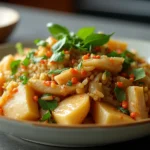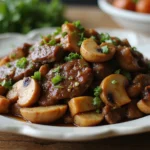This authentic Chinese Beef Noodle Soup is a warm and hearty dish that embodies comfort and tradition.
The rich, savory broth combined with tender beef and chewy noodles creates a satisfying flavor profile that warms the soul.
I first encountered this dish in a bustling street market in Lanzhou, where the aroma of spices and simmering broth filled the air.
Perfect for cold days or family gatherings, this recipe is sure to bring smiles to the table.
The History and Cultural Significance
• Chinese Beef Noodle Soup traces its origins to Lanzhou, China, during the early 20th century, where it was originally created by Muslim Hui people.
• The dish evolved over decades as local ingredients and spices were incorporated, eventually becoming a staple in Chinese cuisine.
• In China, this dish traditionally appears during festivals and family gatherings, symbolizing unity and warmth.
• While many variations exist across different regions, the authentic Lanzhou version maintains hand-pulled noodles that set it apart from imitations.
Recipe Overview
Nutritional Information (per serving)
Ingredients
Essential Equipment Guide
Wok: A wok is essential for achieving the high heat needed for stir-frying the beef. Look for a heavy-duty carbon steel wok that retains heat effectively.
Pressure Cooker: A pressure cooker allows for tenderizing the beef quickly, resulting in a rich and flavorful broth. If you don’t have one, a Dutch oven can work, but cooking time will be longer.
Fine Mesh Strainer: This tool is vital for clarifying the broth by removing impurities. A sturdy stainless-steel strainer will hold up against the heat and provide consistent results.
Preparation Methods
Broth Clarification: This process involves simmering the broth and skimming off impurities that rise to the surface. It is crucial for achieving a clear, flavorful broth, so be diligent in this step.
Noodle Pulling: If making homemade noodles, the technique involves stretching and folding the dough repeatedly to develop gluten. This results in the perfect chewy texture that is characteristic of authentic beef noodle soup.
Flavor Layering: Building flavors through sautéing aromatics like garlic and ginger before adding liquids enhances the overall depth of the broth. This step should not be rushed, as it sets the foundation for the dish.
Step 1: Prepare the Beef

Begin by cutting the beef shank into large chunks.
Make sure to include some bone for richer flavor in the broth.
Rinse the beef under cold water to remove any impurities.
This step helps ensure a clean-tasting broth.
Step 2: Prepare the Broth
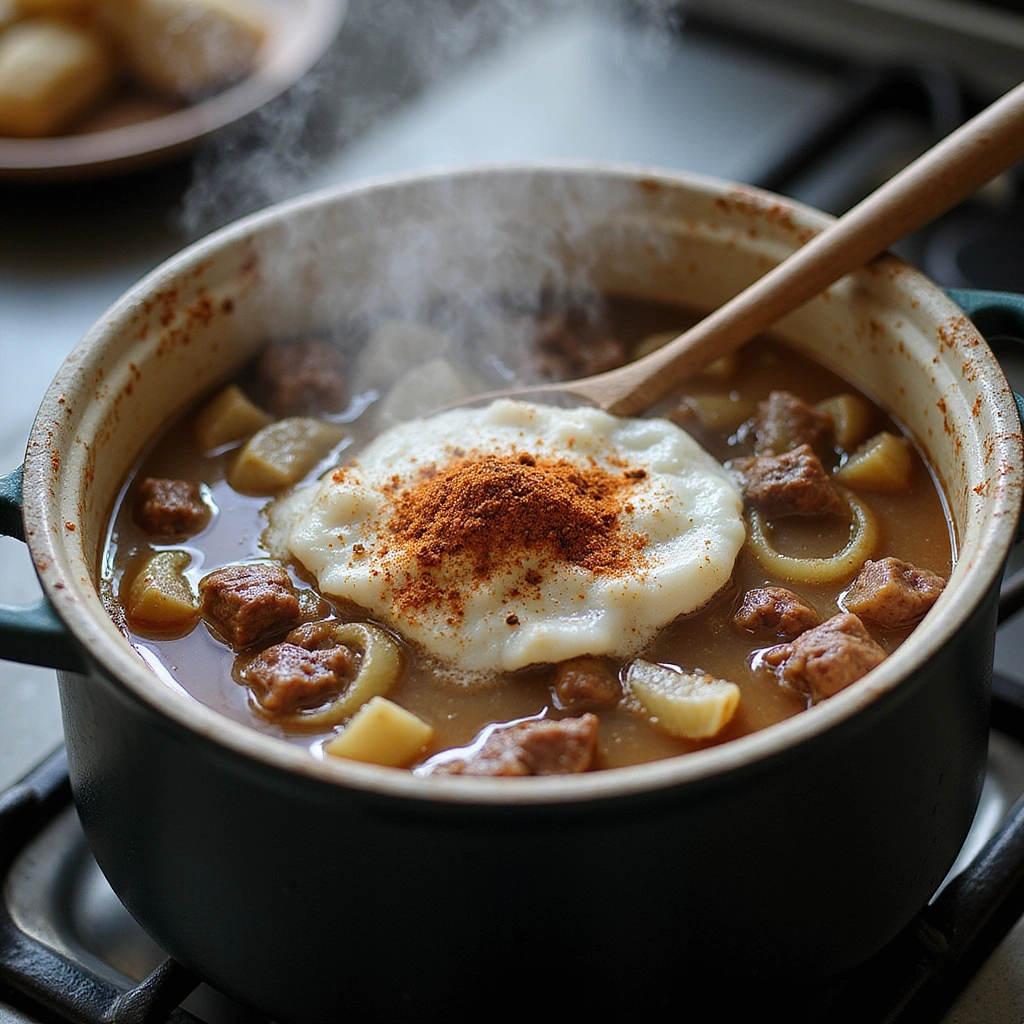
In a large pot, combine the beef, water, onion, ginger, and garlic.
Bring the mixture to a boil over high heat.
Once boiling, reduce to a simmer and skim off any foam that forms on the surface.
This process helps clarify the broth.
Step 3: Simmer the Broth
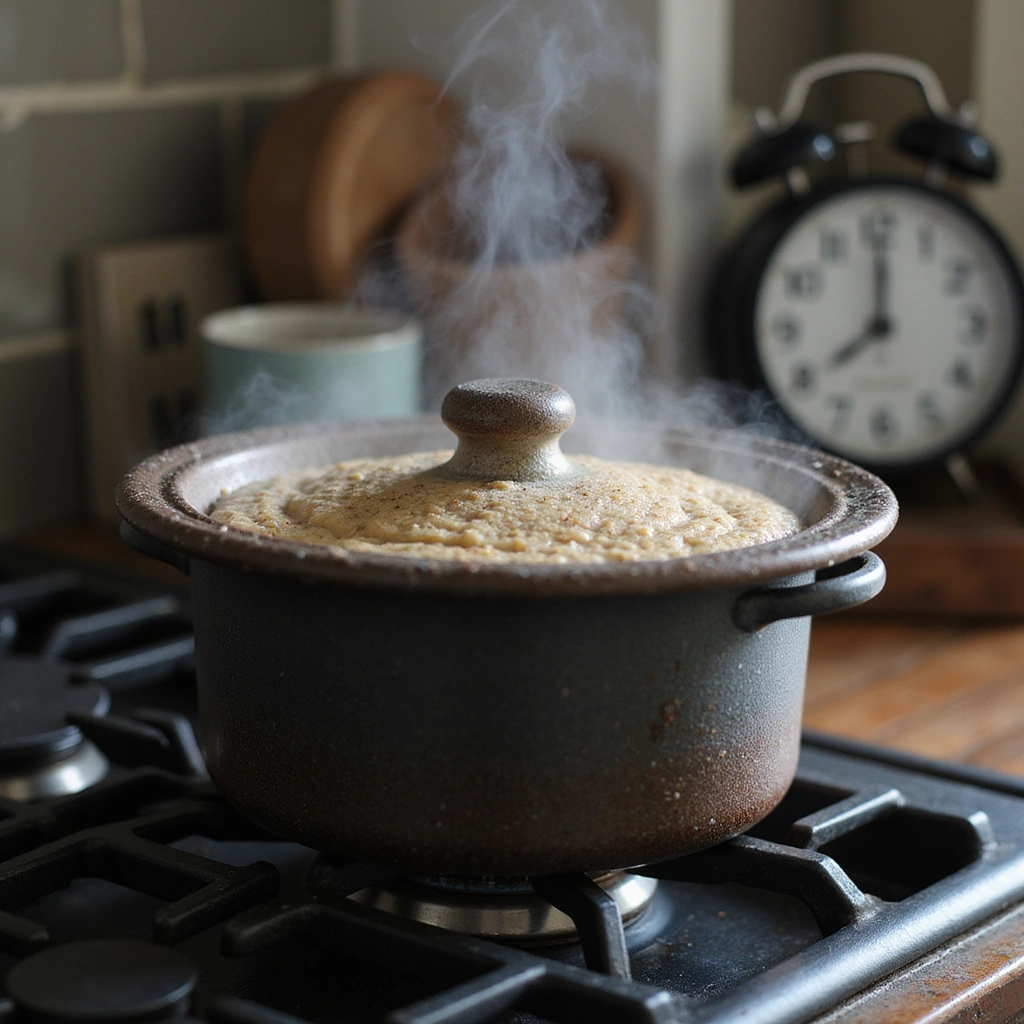
Cover the pot and let the broth simmer for about 2 hours.
Check occasionally to ensure it stays at a gentle simmer.
The beef should become tender and the flavors will deepen.
You want the broth to be rich and aromatic by the end of cooking.
Step 4: Prepare the Noodles
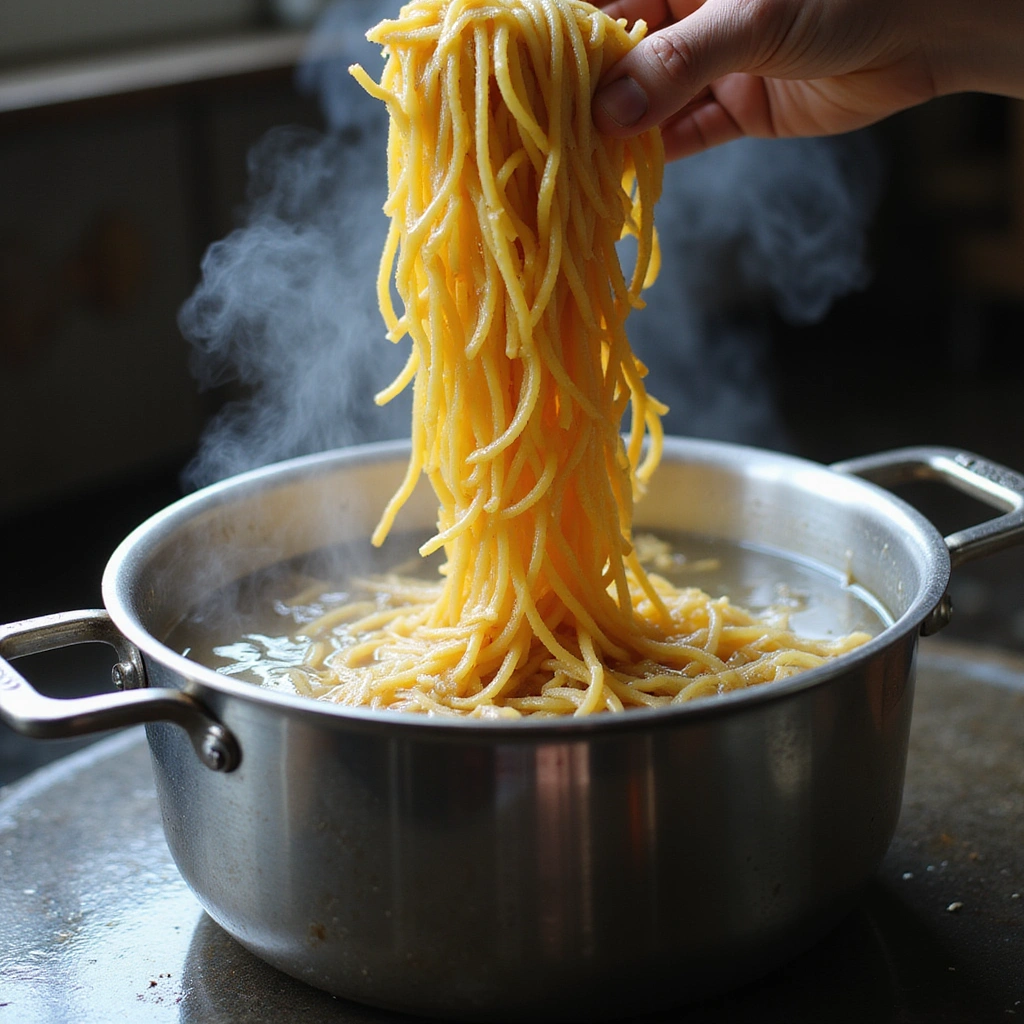
While the broth is simmering, cook the noodles according to package instructions.
Usually, this takes about 3 to 5 minutes in boiling water.
Make sure not to overcook them, as they will continue to cook in the broth.
Drain and rinse the noodles under cold water to stop the cooking process.
Step 5: Season the Broth
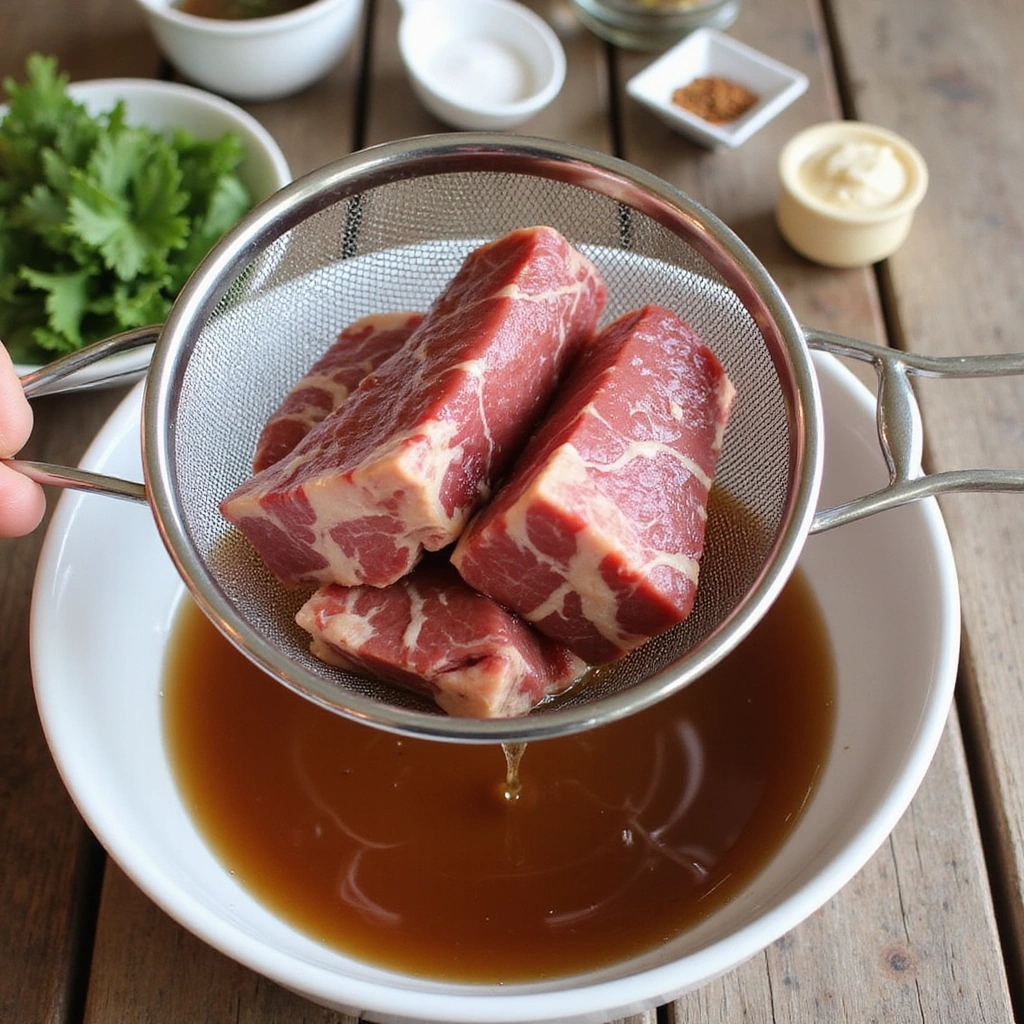
Once the broth has finished simmering, remove the beef and strain the broth through a fine mesh strainer.
Add soy sauce, cooking wine, and five-spice powder to the strained broth.
Taste and adjust seasoning as needed, adding salt if desired.
This step is crucial for enhancing the overall flavor of the soup.
Step 6: Shred the Beef
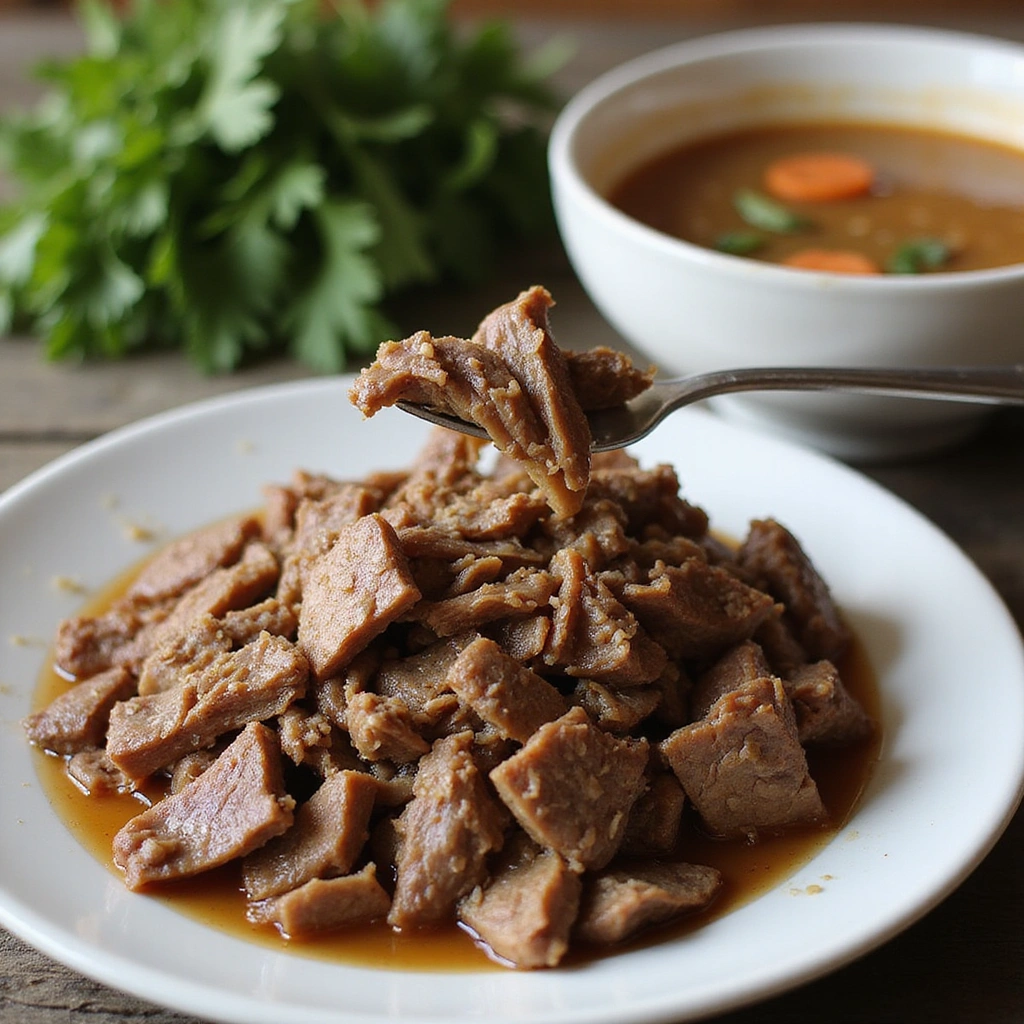
Once the beef has cooled slightly, shred it into bite-sized pieces.
Remove any excess fat or gristle for a leaner soup.
Set aside the shredded beef for serving later.
This step ensures that the beef is tender and easy to eat.
Step 7: Assemble the Bowl
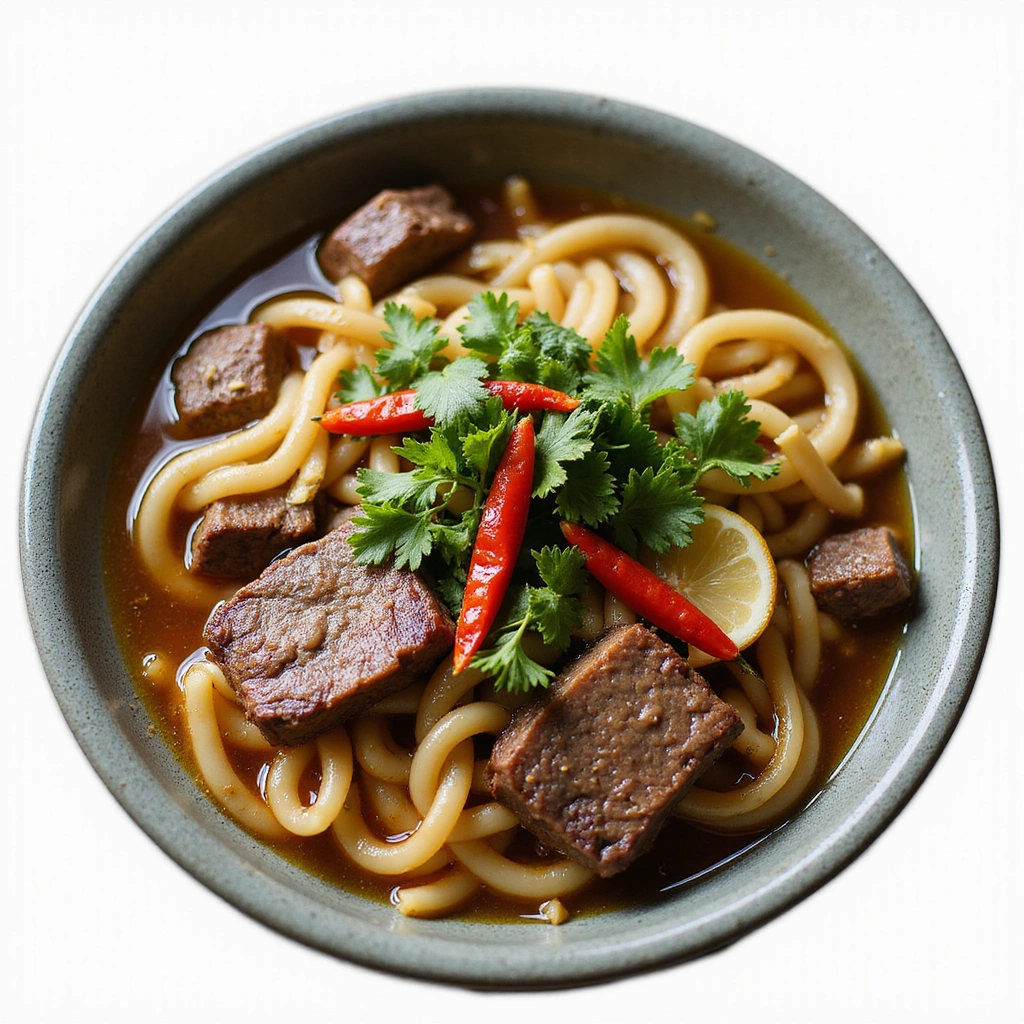
In a serving bowl, place a portion of the cooked noodles.
Top with the shredded beef and ladle the hot broth over them.
Add scallions, cilantro, and sliced chili on top for garnish.
This final presentation adds freshness and color to the dish.
Step 8: Serve and Enjoy

Serve the beef noodle soup immediately while hot.
Provide chopsticks and a spoon for easy eating.
Encourage diners to mix the garnishes into the soup for added flavor.
Enjoy the warmth and heartiness of this authentic dish!
Critical Timing and Temperature Guide
Simmering the Broth: Simmer the broth for exactly 2 hours at a low temperature, ensuring it gently bubbles. The beef should be fork-tender, and the broth should be aromatic and flavorful. Avoid boiling too vigorously, which can make the broth cloudy.
Noodle Cooking: Cook the noodles for 3 to 5 minutes until al dente, then rinse with cold water. Overcooked noodles will become mushy in the soup, so perform a taste test towards the end of the cooking time.
Broth Seasoning: Season the broth just before serving, after straining. The flavors should be balanced, with a savory depth from the soy sauce and spices. Taste and adjust to your preference, as the saltiness can vary based on the soy sauce used.
Pro Tips for Chinese Beef Noodle Soup Recipe Warm And Hearty
• Ingredient Selection: Choose high-quality beef shank with good marbling for the best flavor and tenderness. Fresh wheat noodles are also crucial for achieving the right texture.
• Preparation Secret: Allow the beef to sit in the broth after cooking for an additional 15 minutes before serving. This enhances the beef’s flavor and ensures tenderness.
• Temperature Management: Keep the broth at a low simmer rather than a rolling boil to prevent cloudiness. This helps achieve a clearer, more refined broth.
• Texture Enhancement: For the ultimate chewy noodle experience, consider making your own noodles. The hand-pulling technique creates a unique texture that store-bought noodles can’t replicate.
• Flavor Layering: Sauté aromatics before adding them to the broth to build a deeper flavor base. This step is often overlooked but is vital for a rich soup.
• Make-Ahead Strategies: Prepare the broth and beef in advance, storing them separately in the refrigerator. Reheat before serving, adding fresh noodles just before serving.
• Restaurant-Quality Finishing Touches: Drizzle a bit of sesame oil over the soup before serving for added richness and aroma. This small touch elevates the overall experience.
• Equipment Optimization: Use a heavy-bottomed pot for simmering the broth to prevent scorching. A Dutch oven or cast-iron pot works well and retains heat efficiently.
Troubleshooting Common Issues
• Broth Too Oily: If your broth is oily, it may be due to excess fat from the beef. Skim off the fat during cooking or refrigerate the broth, allowing the fat to solidify on top for easy removal.
• Noodles Overcooked: If the noodles turn mushy, it may be due to cooking them too long. Always test for doneness a minute or two before the package instructions suggest, and rinse them to stop cooking.
• Broth Lacks Flavor: If the broth isn’t flavorful enough, it may need additional seasoning. Add more soy sauce, salt, or even a splash of vinegar to brighten the flavors.
• Beef Tough: If the beef isn’t tender, it may not have simmered long enough. Ensure a consistent simmer and check for tenderness before serving.
• Too Spicy: If the soup is too spicy, balance it with a bit of sugar or more broth to dilute the heat. Adjusting garnishes can also help manage spice levels.
Variations and Regional Differences
• Lanzhou Style: This version emphasizes hand-pulled noodles and a clear, aromatic broth flavored with beef bones and spices. It’s often served with a side of chili oil for an additional kick.
• Taiwanese Beef Noodle Soup: In contrast, the Taiwanese version includes a richer, thicker broth with a variety of spices such as star anise and is often served with pickled mustard greens for added flavor.
• Spicy Sichuan Version: This variation incorporates Sichuan peppercorns and chili oil for a spicy kick, appealing to those who enjoy bold flavors and heat.
• Modern Interpretations: Today, you might find vegetarian versions using mushrooms and vegetable broth, catering to the growing interest in plant-based diets while still capturing the essence of beef noodle soup.
Food Science Behind the Recipe
• Gelatinization: The slow simmering of the beef releases collagen from the bones, which gelatinizes in the broth, giving it a rich and silky mouthfeel. Understanding this process helps achieve the desired texture in the final soup.
• Maillard Reaction: Browning the beef at the start creates complex flavors through the Maillard reaction, enhancing the overall taste of the broth. This step is crucial for developing deep, savory notes.
• Emulsification: The combination of fats from the beef with the broth creates an emulsion, giving the soup its hearty consistency. Properly managing temperatures ensures this emulsion forms correctly.
Frequently Asked Questions
What’s the most common mistake people make when preparing Chinese Beef Noodle Soup? The most common mistake is not simmering the broth long enough, which leads to a lack of depth in flavor. Ensure to simmer for a full 2 hours for the best results.
Can I prepare components of this dish in advance? Yes, the broth and beef can be made ahead of time and stored in the refrigerator for up to 3 days. Reheat before serving, and cook fresh noodles just before serving.
How do I adapt this recipe for dietary restrictions? To make this recipe vegetarian, substitute the beef with mushrooms and use vegetable broth instead. You can also use gluten-free noodles for a gluten-free version.
What’s the best way to store and reheat leftovers? Store leftovers in an airtight container in the refrigerator for up to 3 days. Reheat in a pot over low heat, adding a splash of water if needed to restore consistency.
Can I freeze this dish? Yes, the broth and beef can be frozen separately for up to 3 months. Thaw in the refrigerator overnight and reheat gently on the stove.
What wine or beverages pair best with this dish? A light-bodied red wine, such as Pinot Noir, pairs well with the richness of the beef and spices. Alternatively, a chilled green tea can complement the flavors nicely.
How can I scale this recipe up for a crowd? Simply multiply each ingredient by the number of servings needed, but also make sure to use a larger pot to accommodate the increased volume.
What side dishes complement this recipe best? Side dishes like steamed bok choy or Chinese pickled vegetables enhance the meal’s balance and add freshness.
How do professional chefs elevate this dish for restaurant service? Professional chefs often add a drizzle of high-quality sesame oil and a sprinkle of freshly ground black pepper just before serving, which elevates the dish’s aroma and flavor.
Serving and Presentation Guide
• Traditional Presentation: Serve in a deep bowl to showcase the broth, noodles, and garnishes. Use a sprinkling of scallions and cilantro on top for a fresh look, and consider adding a few slices of chili for color.
• Modern Plating Ideas: Present the soup in a clear glass bowl to highlight the vibrant colors of the ingredients. Use minimal garnishes for a clean, modern look that emphasizes the quality of the broth and noodles.
• Accompaniment Suggestions: Serve with a side of chili oil, soy sauce, or pickled vegetables to allow guests to customize their flavor experience.
• Special Occasion Presentation: For celebrations, consider a larger communal bowl filled with soup at the center of the table. Offer individual bowls for guests to serve themselves, creating a shared dining experience.
Conclusion
I hope you enjoy making this authentic Chinese Beef Noodle Soup as much as I do.
Its rich flavors and comforting warmth make it a perfect addition to any meal.
Try this recipe and share it with your friends and family for a true taste of tradition.





